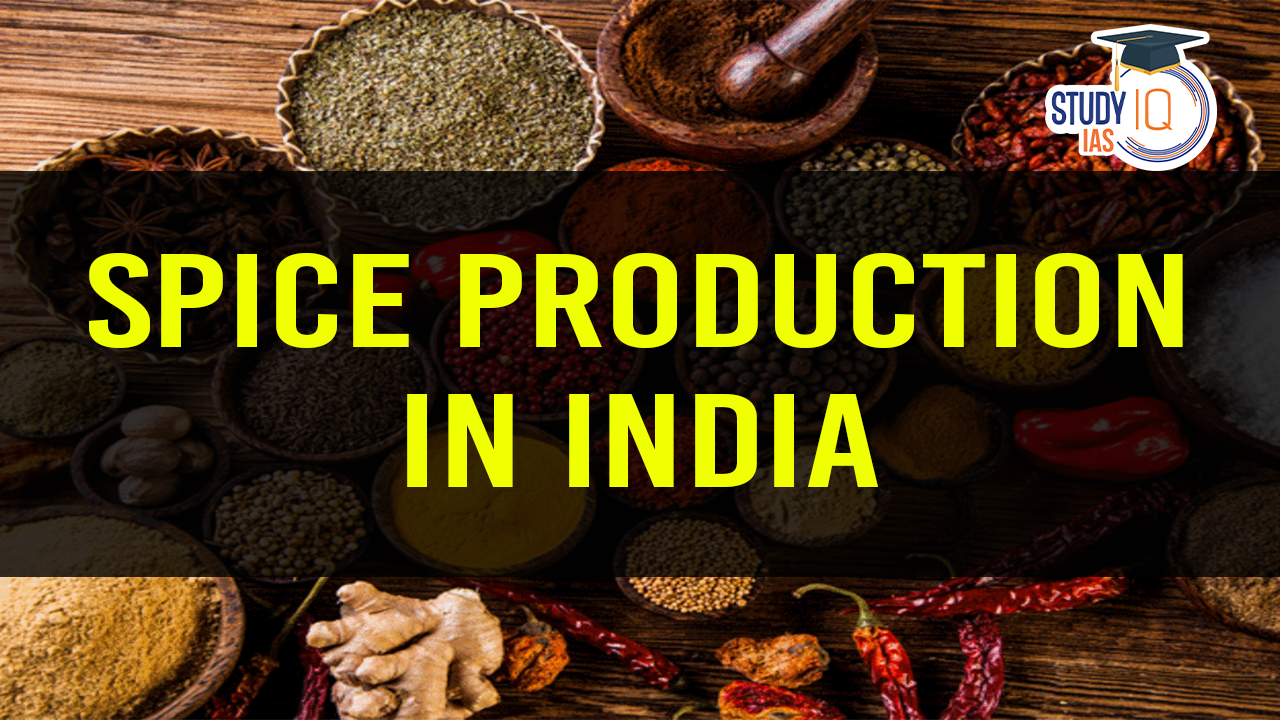Table of Contents
Context: India is the largest producer and exporter of diverse varieties of spices in the world; its share in the global seasoning market is very low.
Spice Production in India
- India is the largest producer and exporter of spices, contributing to 75% of global spice production.
- Produces a variety of spices like black pepper, cardamom, ginger, turmeric, chili, cumin, coriander, and saffron.
- 85% of spices produced in India are consumed domestically.
- Top spice-producing states in India:
- (1) Madhya Pradesh, (2) Rajasthan, (3) Gujarat, (4) Karnataka, (5) Telangana.
| World Spice Organisation (WSO) |
|
India’s Share in the Global Seasoning Market
- Despite being the largest producer and exporter of spices, India’s share in the global seasoning market ($14 billion in 2024) is only 7%.
- Spice refers to a single, dried plant part like a seed, bark, or fruit used to add flavor to food.
- Seasoning is a blend of various ingredients, including spices, herbs, salt and other flavor enhancers.
- In contrast, China holds 12% of the market, while the U.S. accounts for 11%.
Reason for Low Share in Seasoning Market
- India primarily exports raw spices, whereas countries like China and the U.S. dominate processed and value-added spices (seasonings).
- There is a huge growth opportunity in the seasoning segment.
Need for Value Addition in Spice Exports
- Currently, only 48% of India’s spice exports are value-added products
- The remaining 52% is sold as whole spices.
- Target:
- Increase value-added spice exports to 70%.
- Achieve $10 billion export revenue by 2030 (Spices Board of India’s target).
- Emerging competitors: Vietnam, Indonesia, Brazil, China, and African countries are expanding their spice production.
| Spices Board of India |
|


 Out-of-Pocket Health Expenditure, Reason...
Out-of-Pocket Health Expenditure, Reason...
 Treasury Bills (T-bills): RBI Cuts Holdi...
Treasury Bills (T-bills): RBI Cuts Holdi...
 Fisheries Sector in India, Current Statu...
Fisheries Sector in India, Current Statu...

























